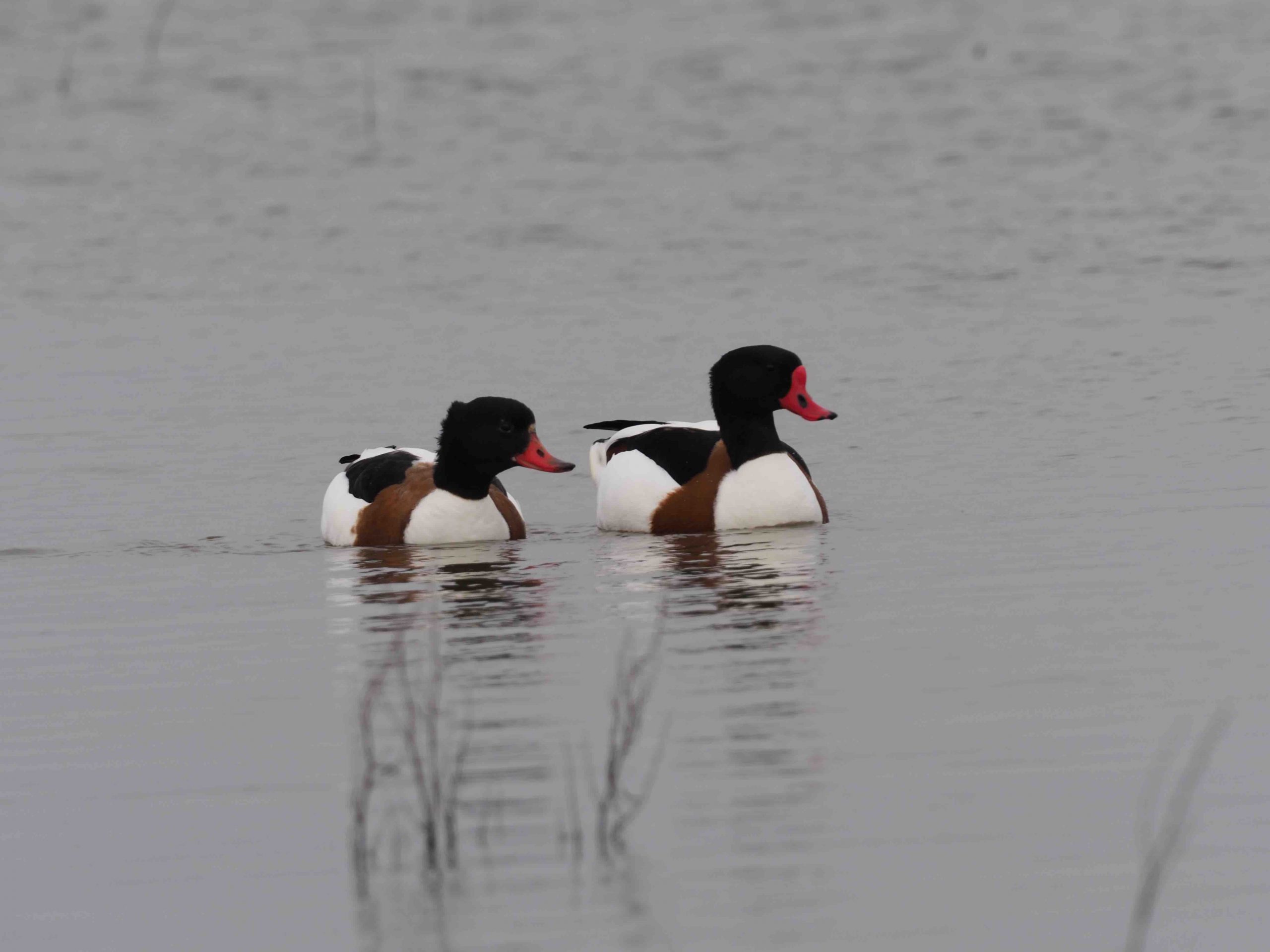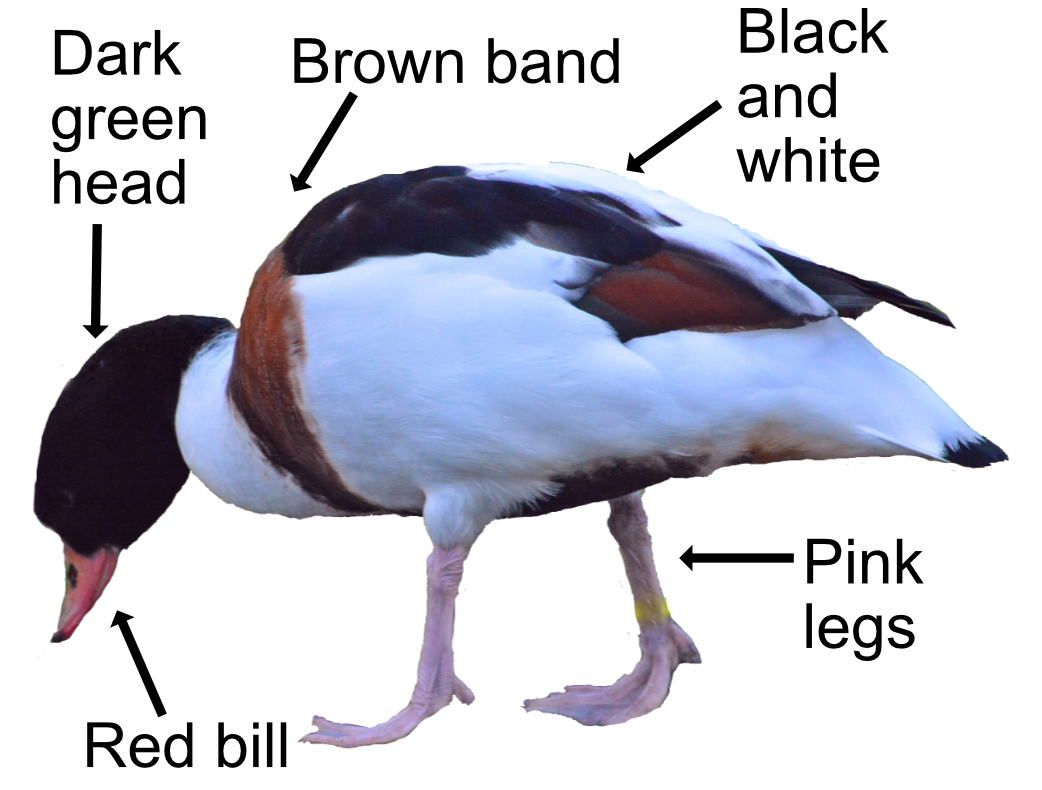
The colourful Shelduck is one of our largest ducks, growing as big as some geese. It can be found all around the coast on inlets and estuaries, and on reservoirs and gravel pits.
The Shelduck is black and white with a dark green head and neck. It has a chestnut band on its breast, a red bill, pink legs and a black-tipped tail. The males differ from the female by having a bigger red bulge at the base of its bill. The Shelduck's black wingtips and shoulders are obvious in flight and this helps tell them apart from other flying ducks. It is a fairly silent bird with the female occasionally giving a growling, "ark, ark, ark!" call.
They eat shellfish, shrimps, small fish, water plants, and other water insects from filtering mud and have specially adapted tooth-like projections on each side of their bills to do this. Their favourite food are tiny water snails called Hydrobia. They upend themselves to get at submerged food, showing off their black tummy, chestnut bum, and black-tipped tail.

Shelducks are monogamous and will mate for life. They are sociable birds and live in large flocks, leaving their young chicks in creches with just one or two adults to look after them. In April, they make a nest of grass or straw in an enclosed site like a rabbit burrow in a dune, under a building, or in a haystack. They lay 8-10 eggs which hatch after 29 days. Like other ducks, the young can feed themselves within hours of hatching. The parents soon dump their youngsters into a Shelduck creche, or play group, and fly off to the traditional moulting areas like Bridgewater Bay in Somerset. The moulting flocks can be very large (100,000 have been recorded on the Wadden Sea). While moulting, they are flightless for 4 weeks. Meanwhile, the youngsters left in the creche become independent after 20 days and can fly at 43 days. Until they can fly, the young Shelducks will dive under water to avoid predators while the supervising adults fly away, acting as a decoy.
There are 50,000 Shelducks in Britain. Their Latin name is 'tadorna tadorna' and comes from the French name 'tadorne'. This may originally have come from Celtic for 'pied waterfowl'. The English 'shelduck' also means 'pied duck'.